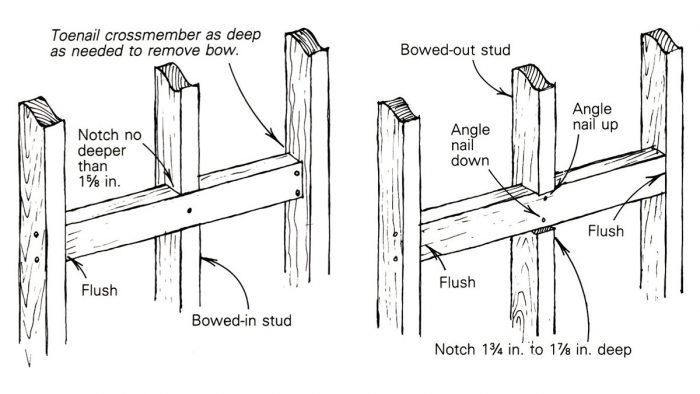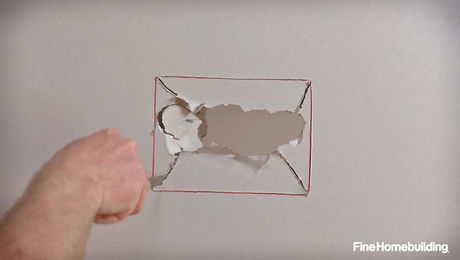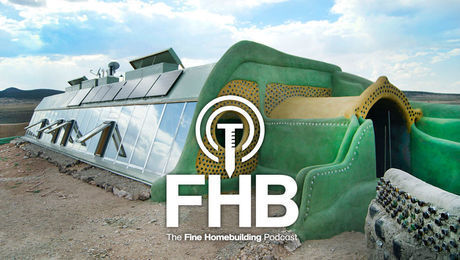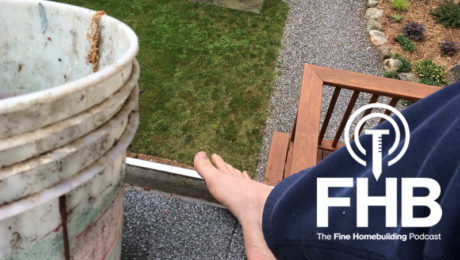
It’s not unusual for a stud wall to have some sticks in it that bow in or out of the wall plane, making it tough to do a decent job on the drywall or paneling. Here’s how I fix both situations. After identifying the bowed-in studs, I work on the worst one first. Using a straightedge held vertically against the side of the stud, I find the high point of the bow and measure across it for a notch that will accept a 2×4 crossmember. Then I set the saw depth to make a cut just a little deeper than the thickness of my 2×4 crossmember — about 1-5/8 in. Now I nail the crossmember to the bowed stud, flush one end of it to the adjacent stud and nail it, and toenail the opposite end as deep as needed to remove the bow (see drawing 1).
To fix a bowed-out stud (see drawing 2), I make a notch 1-3/4 in. to 1-7/8 in. deep at the point of the stud that is bowed out the most. Then I drive a pair of 16d nails — one angled up and one angled down — to anchor the crossmember to the stud. When the crossmember is flushed and nailed with the adjacent studs, the bow is gone. This second method works well when the opposite side of the wall is inaccesible — covered with a shear wall, for example.
—John Riedhart, Ventura, CA
Edited and illustrated by Charles Miller
From Fine Homebuilding #60





























View Comments
No drawing two. Needs it.
AGAIN - no second drawing
Too bad there's no HUMANS monitoring this page anymore
In 2019, there are clearly two drawings. I must have my orientation to bow-in and bow-out reversed, as I interpret the first picture as fixing a bow-out stud, and the second picture as fixing a bowed in stud.
I agree with CarolCan,